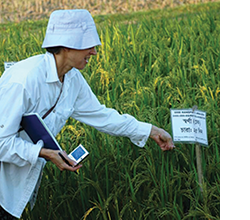Diez años de transgénicos en Brasil
http://www.biodiversidadla.org/Principal/Secciones/Documentos/Boletin_N_543_de_la_RALLT._
Diez_anos_de_transgenicos_en_Brasil
Este es un blog bilingüe fundado en mayo de 2004, dedicado a proveer perspectivas críticas sobre biotecnología y bioseguridad … This is a bilingual blog, founded in May 2004, dedicated to providing critical perspectives on biotechnology and biosafety. Contact: ruiz@tutanota.com.
Etiquetas: Doug Gurian-Sherman, en, UCS
 Biotech agriculture facility and irrigation ditch near the beach on the Hawaiian island of Kauai. (Photo and article by Mike Ludwig)
Biotech agriculture facility and irrigation ditch near the beach on the Hawaiian island of Kauai. (Photo and article by Mike Ludwig)Notes
1. Séralini GE et al (2012) Long term toxicity of a Roundup herbicide and a Roundup-tolerant genetically modified maize. Food and Chemical Toxicology, 50(11): 4221-4231.2. http://earthopensource.us7.list-manage1.com/track/click?u=50141f121d7b3fbaa04918d11&id=7711718270&e=24cd323b033. http://earthopensource.us7.list-manage.com/track/click?u=50141f121d7b3fbaa04918d11&id=23008d4439&e=24cd323b034. Organisation for Economic Cooperation and Development (OECD) (2009). OECD guideline no. 452 for the testing of chemicals: Chronic toxicity studies: Adopted 7 September 2009. http://earthopensource.us7.list-manage.com/track/click?u=50141f121d7b3fbaa04918d11&id=5f884d2ff0&e=24cd323b035. Séralini GE et al (2013). Answers to critics: Why there is a long term toxicity due to NK603 Roundup-tolerant genetically modified maize and to a Roundup herbicide. Food and Chemical Toxicology 53: 461-468. http://earthopensource.us7.list-manage.com/track/click?u=50141f121d7b3fbaa04918d11&id=70e7e0c5c2&e=24cd323b036. http://earthopensource.us7.list-manage2.com/track/click?u=50141f121d7b3fbaa04918d11&id=30199fa686&e=24cd323b037. Deheuvels P. Étude de Séralini sur les OGM: Pourquoi sa méthodologie est statistiquement bonne [Seralini study on GMOs: Why the methodology is statistically sound]. Le Nouvel Observateur. 9 October 2012. http://earthopensource.us7.list-manage.com/track/click?u=50141f121d7b3fbaa04918d11&id=46d4f6cdc2&e=24cd323b038. Saunders P. Excess cancers and deaths with GM feed: The stats stand up. Science in Society. 16 October 2012. http://earthopensource.us7.list-manage.com/track/click?u=50141f121d7b3fbaa04918d11&id=893088f156&e=24cd323b039. Deheuvels P. L’étude de Séralini sur les OGM, pomme de discorde à l’Académie des sciences [The Seralini GMO study - A bone of contention at the Academy of Sciences]. Le Nouvel Observateur. 19 October 2012. http://earthopensource.us7.list-manage.com/track/click?u=50141f121d7b3fbaa04918d11&id=5d63a01cc2&e=24cd323b0310. http://earthopensource.us7.list-manage.com/track/click?u=50141f121d7b3fbaa04918d11&id=1bb541d8cd&e=24cd323b0311. http://earthopensource.us7.list-manage.com/track/click?u=50141f121d7b3fbaa04918d11&id=9442410b1a&e=24cd323b0312. Mezzomo BP et al (2012). WITHDRAWN: Effects of oral administration of Bacillus thuringiensis as spore-crystal strains Cry1Aa, Cry1Ab, Cry1Ac or Cry2Aa on hematologic and genotoxic endpoints of Swiss albino mice. Food Chem Toxicol. http://earthopensource.us7.list-manage.com/track/click?u=50141f121d7b3fbaa04918d11&id=3cc6af2bc8&e=24cd323b0313. Mezzomo BP et al. (2013). Hematotoxicity of Bacillus thuringiensis as spore-crystal strains Cry1Aa, Cry1Ab, Cry1Ac or Cry2Aa in Swiss albino mice. J Hematol Thromb Dis 1(1).
Etiquetas: Centroamerica, Costa Rica, es, RALLT

Etiquetas: Andy Stirling, en, England, Owen Paterson, The Guardian

Etiquetas: en, Independent Science News, Jonathan Latham, Pamela Ronald
| November 13, 2013 |
THIRD WORLD NETWORK BIOSAFETY INFORMATION SERVICE
Dear Friends and Colleagues
We are pleased to highlight the attached TWN Biosafety Briefing which identifies the sources of health risks that can potentially arise from GM foods as well as presents the increasing body of evidence that shows the disruptive effect of the GM transformation process and clear signs of toxicity in well-controlled animal feeding studies even of a short-term nature.
This paper was presented at the Scientific Conference 2012 jointly organized by the European Network of Scientists for Social and Environmental Responsibility (ENSSER), Third World Network and Tara Foundation, 'Advancing the Understanding of Biosafety: GMO Risk Assessment, Independent Biosafety Research and Holistic Analysis', held on 28-29 September 2012 in Hyderabad, India, and was first published in the Conference Proceedings.
With best wishes,
Third World Network
131 Jalan Macalister
10400 Penang
Malaysia
Email: twnet@po.jaring.my
|
| Download document(s): |
Etiquetas: en, ENSSER, Science, Third World Network